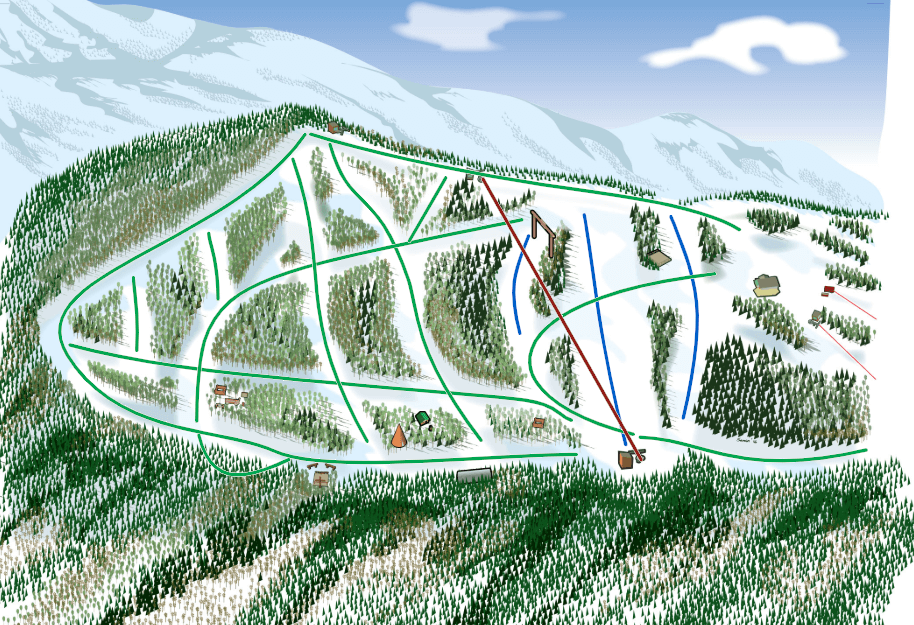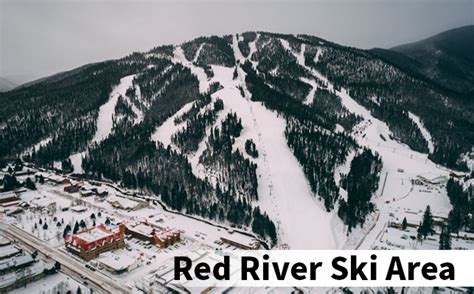Red River Ski Guide: Mastering Trails

The Red River Ski Area in New Mexico offers an unparalleled skiing experience, with over 60 trails and 7 lifts to cater to diverse skill levels. As a seasoned skier, mastering the trails at Red River requires a combination of technical skill, physical endurance, and knowledge of the terrain. In this comprehensive guide, we will delve into the intricacies of the Red River Ski Area, providing expert insights and tips to help you navigate the trails like a pro.
Understanding the Terrain

The Red River Ski Area boasts a unique terrain, with a mix of gentle groomers, challenging steeps, and exciting glades. The ski area is divided into several zones, each with its distinct character and challenges. The upper mountain offers breathtaking views and exhilarating runs, while the lower mountain provides a more relaxed skiing experience, ideal for beginners and families. To navigate the trails effectively, it’s essential to understand the ski area’s layout, including the location of lifts, trails, and amenities.
Trail Difficulty and Classification
The trails at Red River are classified into four difficulty levels: beginner, intermediate, advanced, and expert. Each trail is carefully marked with a corresponding symbol, indicating its level of difficulty. Green circles denote beginner trails, while black diamonds signify expert trails. Understanding the trail classification system is crucial to ensure a safe and enjoyable skiing experience. For instance, the Catwalk trail, marked with a blue square, is an intermediate run that offers a thrilling ride through the trees, with steep pitches and tight turns.
| Trail Difficulty | Symbol | Description |
|---|---|---|
| Beginner | Green Circle | Gentle, groomed trails suitable for novices |
| Intermediate | Blue Square | More challenging trails with varied terrain and obstacles |
| Advanced | Black Diamond | Steep, technical trails requiring advanced skills and experience |
| Expert | Double Black Diamond | Extremely challenging trails with extreme terrain and hazards |

Trail Navigation and Strategy

Effective trail navigation is critical to maximizing your skiing experience at Red River. A well-planned strategy can help you avoid crowded trails, minimize wait times, and discover hidden gems. Early morning skiing is an excellent way to beat the crowds and enjoy fresh powder, while late afternoon skiing offers a more relaxed atmosphere and stunning sunset views. It’s also essential to stay informed about trail conditions, lift operations, and weather forecasts to plan your day accordingly.
Essential Skiing Techniques
To tackle the trails at Red River with confidence, it’s crucial to develop essential skiing techniques, including turning, stopping, and speed control. Carving turns is an effective way to navigate groomed trails, while skidding turns is better suited for icy or steep terrain. Pole planting and edge control are also vital techniques to master, as they enable you to maintain balance and stability on varying terrain.
A comprehensive understanding of ski equipment is also vital, including the importance of ski length, ski width, and binding settings. For example, shorter skis are ideal for beginner skiers, as they are easier to maneuver, while wider skis provide better stability and floatation in deep powder. Ski maintenance is also crucial, as it ensures your equipment is in good condition and functions optimally.
Advanced Skiing Techniques and Strategies
Once you’ve mastered the fundamentals, it’s time to explore advanced skiing techniques and strategies. Tree skiing and glade skiing offer a thrilling experience, but require precise control and spatial awareness. Mogul skiing and bump skiing demand agility and adaptability, as you need to navigate uneven terrain and absorb shocks. Steep skiing and extreme skiing require exceptional skill and mental toughness, as you’ll be facing extreme terrain and high-risk situations.
Skiing in Different Snow Conditions
Skiing in various snow conditions can be a challenge, but with the right techniques and strategies, you can adapt to any situation. Powder skiing requires floatation and speed control, while ice skiing demands edge control and precision. Slush skiing and mushy skiing require patience and flexibility, as you need to adjust your technique to accommodate the changing snow conditions.
Staying Safe on the Slopes
Safety is a top priority when skiing at Red River. It’s essential to follow basic safety rules, including wearing a helmet, skiing within your ability, and respecting other skiers. Avalanche safety is also crucial, as the Red River Ski Area is prone to avalanche risks. Make sure to check avalanche forecasts and carry avalanche safety gear, such as a transceiver, probe, and shovel.
Emergency Procedures and First Aid
In the event of an emergency, it’s vital to know the proper procedures and first aid techniques. Ski patrol is always available to assist with injuries and emergencies, but it’s essential to know basic first aid and CPR. Avalanche rescue techniques are also critical, as every minute counts in an avalanche situation.
What is the best time to ski at Red River?
+
The best time to ski at Red River is during the early morning or late afternoon, when the crowds are smaller and the snow is fresher.
How do I navigate the trails at Red River?
+
To navigate the trails at Red River, start by studying the trail map and planning your route according to your skill level and interests. Use the ski area’s signage and markings to guide you, and don’t hesitate to ask for directions from ski patrol or other skiers.
What safety precautions should I take when skiing at Red River?
+
When skiing at Red River, always wear a helmet, ski within your ability, and respect other skiers. Check avalanche forecasts and carry avalanche safety gear, and know basic first aid and CPR techniques. Stay informed about trail conditions, lift operations, and weather forecasts to plan your day accordingly.
